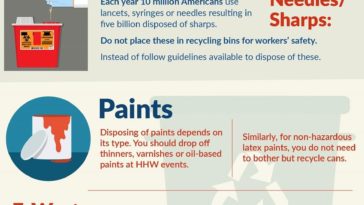Your Comprehensive Overview To Picking The Correct Dumpster Dimension For Any Type Of Job
Your Comprehensive Overview To Picking The Correct Dumpster Dimension For Any Type Of Job
Blog Article
Author-Matthiesen Davies
When embarking on a job that requires a dumpster, the dimension you select can considerably affect its performance and cost-effectiveness. Picture having the perfect container that fits all your waste without being exceedingly big or too tiny. It all begins with understanding the nuances of your task and selecting a dumpster dimension that lines up with your particular requirements. So, prior to you make a decision, consider the variables at play to guarantee a seamless waste monitoring process from beginning to end.
Variables to Think about
When picking the ideal dumpster dimension, there are a number of vital factors to think about.
Initially, think about the kind of waste you'll be taking care of. Various materials might need differing quantities of area, so understanding what you'll be placing in the dumpster is crucial.
Next off, evaluate the quantity of waste you anticipate to create. If you ignore the quantity, you may need to make several trips to dispose of every little thing, which can be inconvenient and costly. On the other hand, leasing a dumpster that's too big can bring about unneeded expenses.
Additionally, take into consideration the space where the dumpster will certainly be positioned. Ensure there suffices space for the dumpster to be supplied and picked up without any obstructions.
Lastly, consider any weight limitations that might use. Surpassing the weight restriction can cause added charges and even the rejection of service.
Dumpster Size Choices
For selecting the right dumpster dimension, it's necessary to have a mutual understanding of the offered choices. Dumpster sizes normally vary from 10 to 40 cubic yards, with variations in between.
A 10-yard dumpster appropriates for tiny jobs like a garage cleanout or a tiny renovation. If you're dealing with a medium-sized job such as a kitchen remodel or a basement cleanout, a 20-yard dumpster could be the appropriate option.
For larger projects like a whole-house improvement or commercial building, a 30 or 40-yard dumpster could be more suitable to suit the volume of waste generated.
When deciding on a dumpster dimension, think about the quantity and kind of debris you expect to take care of. It's better to select a somewhat larger dimension if you're uncertain to prevent overfilling. Keep in mind, it's more economical to lease a dumpster that fits your demands as opposed to needing to get an additional one.
Matching Size to Project
Optimally matching the dumpster size to your task is crucial for reliable waste administration. To determine the ideal size, take into consideration the scope and nature of your job.
For small family cleanouts or restorations, a 10-yard dumpster may suffice. These are normally 12 feet long and can hold around 4 pickup truck lots of waste.
For larger projects like redesigning several spaces or cleaning out a large estate, a 20-yard dumpster could be more suitable. https://emilioykvgq.blogdiloz.com/30655613/eco-conscious-waste-removal-solutions-enhancing-your-space-and-shielding-the-earth are around 22 feet long and can hold roughly 8 pickup loads.
If you're dealing with a significant building project or industrial renovation, a 30-yard dumpster could be the most effective fit. please click the next website page are about 22 feet long and can fit regarding 12 pickup truck lots of particles.
Matching the dumpster dimension to your job guarantees you have adequate space for all waste materials without overpaying for unused ability.
Verdict
Finally, selecting the right dumpster size for your project is vital for effective garbage disposal. By considering factors like the kind and quantity of waste, area schedule, weight constraints, and budget constraints, you can ensure you have the suitable dimension dumpster for your demands. See to it to match the dimension of the dumpster to the extent and nature of your task to avoid overspending on unnecessary expenditures.
